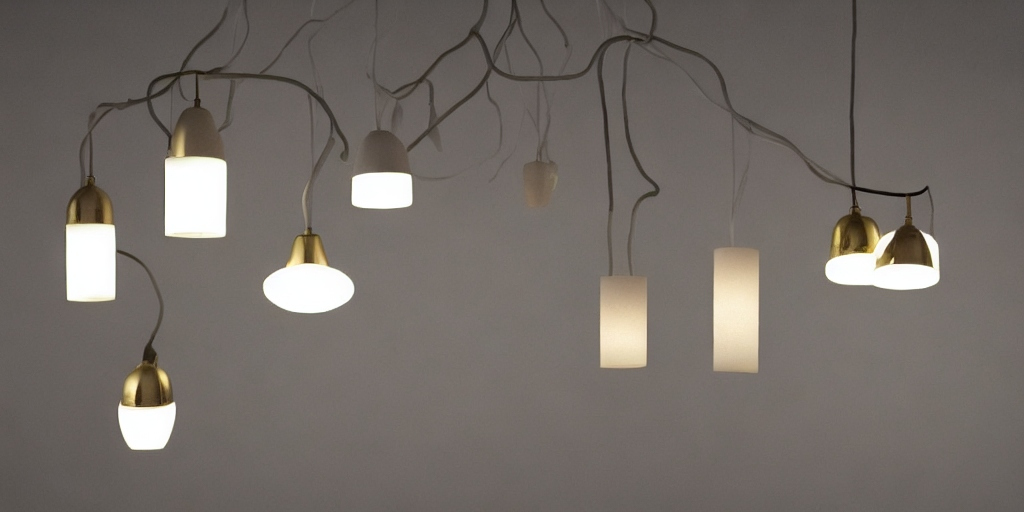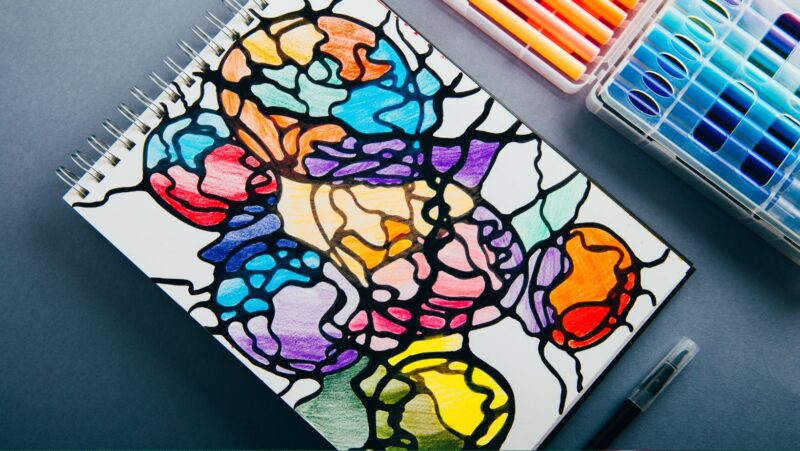In the realm of design, lighting often plays the unsung hero. It’s the magic that can transform an ordinary space into a masterpiece, setting the mood and highlighting the beauty of the architecture. But what really goes into the art and science of lighting design?
From the soft glow of a cozy reading nook to the vibrant hues of a bustling cityscape at night, lighting design has the power to evoke emotions and create memorable experiences. This article will delve into the world of lighting design, shedding light on its importance, techniques, and the role it plays in our daily lives. So, whether you’re a design enthusiast or just curious, get ready to illuminate your understanding of this fascinating field.
Understanding Lighting Design
Lighting design combines art and science, affectingnot just the visual appeal but the emotional response and functionality of a space. It operates on three key aspects— aesthetics, ergonomics, and energy efficiency.
Aesthetics refer to the visual attractiveness of a space. Lighting designers employ techniques like layering of lights, for example, ambient, task, and accent lighting. They ensure that light accents critical features without overshadowing others, creating a harmonious balance. Lighting thus takes an integral role in defining the room’s appeal. From highlighting an artwork to creating dramatic shadows, lighting design plays a pivotal part.
Ergonomics considers the psychological and physiological impact of lighting design. Here, lighting designers take into account factors such as the adequacy of lighting for tasks, the correct color temperature, and the avoidance of harsh shadows or glare. For instance, in an office environment, there’s a focus on providing sufficient light for tasks while minimizing glare, creating a comfortable and productive work setting.
Energy efficiency, a major component of lighting design, emphasizes the use of sustainable and cost-efficient lighting solutions. It involves choosing the right type of lights, for instance, LED over conventional incandescent bulbs, and implementing design strategies to make the optimal use of natural light. Designers always find innovative ways to reduce energy consumption without compromising the quality and functionality of light, assisting in a reduced carbon footprint.
Understanding lighting design extends beyond the visible spectrum but instead dives into a holistic understanding of space, environment, and their intricate interplays. It’s a testament to the transformative power of light and its impact on human life. By mastering lighting design, one can create visually pleasing, comfortable, and energy-efficient spaces that aren’t merely aesthetically pleasing but also resonate on a deeper, emotional level. This exploration provides valuable insights into lighting design’s depth and breadth, contributing towards its full comprehension.
Different Types of Lighting in Design
Moving through the intricacies of lighting design, it becomes crucial to differentiate the various types of lighting utilized in design. In threading this narrative, three primary practices dominate the playground: Ambient Lighting, Task Lighting, and Accent Lighting.
First, Ambient Lighting, also stereotyped as general lighting, forms the baseline from which all other lighting layers spring. It provides understated, uniform illumination throughout a space without causing harsh shadows or glaringly bright areas. Typically, methods such as ceiling-mounted fixtures, wall-mounted fixtures, or recessed lights constitute the backbone of ambient lighting.
Second, Task Lighting underscores practicality. Dissecting its function, one can identify that task lighting serves to aid specific activities like reading, cooking, or working. Directed and efficient, task lights take different forms including desk lamps, under-cabinet lights in kitchens, or strategically positioned floor lamps.
Third, Accent Lighting, the luminary equivalent of highlighting text, accentuates specific elements within a space. Whether it’s a piece of artwork, a bookshelf, or an architectural feature, accent lighting, using techniques such as spotlighting or wall washing, heightens the aesthetic allure and captures focus effortlessly.
Moreover, there exist two lighting strategies straddling the line between these divisions, namely, Decorative Lighting and Kinetic Lighting. Decorative Lighting doubles as design elements, like chandeliers and lanterns, that continue to add to the space even when unlit. In contrast, Kinetic Lighting steadily encroaches on the digital revolution, introducing elements of movement and interactivity to lighting design.
Collectively, these types of lighting unite to compose enchanting symphonies of light and shadow, resounding multifaceted echoes of aesthetic appeal, ergonomic efficiency, and conscious energy management. They pave the path towards transcending the practical and exploring the realm of the transformative, shaping the luminary landscapes of tomorrow.

Key Elements of a Good Lighting Design
Every extraordinary lighting design entails the thoughtful application of several fundamental elements. These elements serve as the building blocks for creating effective, visually compelling, and energy-efficient lighting designs.
- Balance: Achieving harmony between different types of lighting involves skillful balancing. Consider an instance – one incorporates Ambient Lighting to provide uniform illumination, Task Lighting for specific activities, Accent Lighting to emphasize elements, Decorative Lighting forthe design aspect, and Kinetic Lighting for motion dynamics. The right mix creates a balanced, appealing, and versatile lighting scenario.
- Layering: Layering involves combining varying levels and types of lighting. Example? Imagine a room layered with diffused ceiling lights (Ambient Lighting), focused reading lamps (Task Lighting), spotlights for artwork (Accent Lighting), ornate lanterns (Decorative Lighting), and a dynamic color-changing LED strip (Kinetic Lighting). This approach brings depth and dimension to the design, optimizing functionality and aesthetics.
- Control: It’s essential to integrate controllable systems into lighting design. Dimmer switches and programmable settings, usage cases, allow for flexibility, energy efficiency, and mood setting. A restaurant might dim the lights for dinner, providing a cozy ambiance, which is a testament to the importance of control in lighting design.
- Color: Light temperature influences the mood and functionality of a space. Cool, bluish tones may improve productivity in an office, while warm, yellowish light creates a relaxed environment in a living space. RGB (red, green, blue) LEDs offer the ability to change color dynamically, catering to different needs and enhancing the design’s versatility.
- Quality: Another key element, it refers to the accuracy of color rendering and the smoothness of light distribution. High-quality lighting ensures that colors appear true to life and eliminates shadows or glare. This improves visual comfort and creates a more inviting environment.
Designers consider these elements extensively, integrating them into their design strategies. A truly successful lighting design does not merely enhance visuals, it provides a sensory experience, influencing emotions and behavior, and ultimately shaping spaces to their fullest potential.
Lighting Design Process
The process of lighting design constitutes several steps, each underlining the holistic approach required to shape spaces effectively. It starts with understanding the scope of the project, considering architectural, situational, and aesthetic aspects. Site visits and initial assessments, to compile data on existing light conditions, follow this understanding. This research stage provides foundational knowledge for developing the lighting layout.
Developing a design concept happens next. Predicated on the findings of the research stage, it involves deciding the strategic direction of the lighting design, such as enhancing visual comfort, creating an ambient mood, or emphasizing architectural elements. For example, in a restaurant setting, the design concept might focus on creating a warm and relaxing atmosphere by layering different types of lights.
Creating detailed lighting plans occurs subsequently. This involves the placement and specification of fixtures, determining the types of lights to be used, and establishing control systems. Understanding the application’s requirement plays a significant role in this. For instance, an office environment requires adjustable lighting for task-oriented activities, while a museum might need accent lighting to highlight exhibits.
The documentation stage follows next – comprising technical drawings, control schedules, and equipment specifications. It provides explicit instructions for the installation team. For example, it’ll detail the exact location and height of fixtures, designate cabling paths, and specify lamp and driver types.
Upon completion, the monitoring and evaluation phase ensures the lighting design performs as expected while maintaining aesthetic and functional expectations. This could involve photometric studies to measure light levels or ongoing adjustments to lighting controls for optimal performance after initial installations.
In this multi-faceted process, each stage integrates into the next, showcasing the meticulous and strategic nature of the lighting design process.
Future Trends in Lighting Design
Illuminating the path ahead, trends in lighting design evolve to cater not only to aesthetics and ergonomics but also to encompass sustainability and technology. As spaces adapt and change, the lighting design concepts also shift, incorporating new technologies and innovative approaches.
Embracing sustainability, designers tend towards energy-efficient and renewable lighting solutions. LED lights, for instance, are becoming increasingly popular due to their low energy usage and longevity. Similarly, solar-powered external lighting, particularly in the form of lamps and string lights, contributes significantly to reducing environmental impact.
Additionally, taking a leap into the future, smart lighting systems are gaining popularity. These systems facilitate automated control over lighting, adjusting brightness and colors based on specific requirements or time of the day. As an example, Philips Hue offers an expansive range of smart home lighting products.
Further driving the technology march, the concept of human-centric lighting is emerging as a significant trend. These lighting designs take into account the emotional and psychological impact of lighting on individuals, leveraging this effect to maximize comfort and productivity. Studies, such as those conducted by the Lighting Research Center (LRC), underline the connection between light and human health, affirming this trend’s relevance.
Total integration of lighting within structures represents another trend gaining traction. Architects and designers now emphasize the seamless integration of light fixtures within the built environment, creating a minimalist aesthetic. Suspension lights, recessed lighting, and sleek linear lights exemplify this trend.
In an innovative convergence of art, technology, and light, digital art installations are trending in the lighting design industry. Artists leverage lighting technologies to create dynamic, interactive works that transform spaces into immersive experiences.
Lastly, trends lean noticeably towards customizable lighting solutions that tailor to individual needs and preferences. Supplying immense flexibility, these solutions vary the brightness, color, direction, and even shape of light — creating truly personalized spaces.
Undeniably, lighting design trends are swiftly evolving, embracing technology and sustainability while consistently prioritizing individual needs and experiences. As a result, lighting is not only functional; it forms integral to the aesthetics and ambiance of a space, fostering wellbeing and enhancing lives.
Effect of Lighting Design on Mood and Productivity
Lighting design significantly influences mood and productivity. It bridges the gap between aesthetics and functionality. Studies suggest a profound relationship between lighting conditions, mood elevation, and task performance.
Specific lighting settings evoke different psychological responses, altering mood. Bright lighting stimulates happiness, positivity, and vibrant emotions. In contrast, dim lighting instills relaxation, tranquility, and often introspection. For instance, Knez (1995) indicates a significant shift in emotion with different illumination levels and color temperatures.
Apart from emotional responses, lighting design dramatically impacts productivity levels. The light quality affects alertness, concentration, and thus work efficiency. A study by Boyce et al. (2003) corroborates this argument, signifying the role of well-designed lighting in enhancing occupational performance.
Optimizing workplace lighting enhances productivity. It minimizes eye strain, reduces errors, and improves satisfaction, further leading to increased job performance. As per a study by Heschong (2003), students performed 20% faster on math tests in well-lit classrooms, signifying the essential role of good lighting design.
Factors such as color temperature and brightness play a significant role in shaping mood and enhancing productivity. For example, warmer light engenders a cozy ambiance, suitable for relaxation. Conversely, cooler light, resembling daylight, promotes better focus and is ideal for work environments.
Natural light, considered the best light source, significantly influences mood and productivity. Exposure to natural light improves sleep quality, boosts mood, and enhances productivity. Bromley (2008) suggests that daylit environments increase occupant productivity by 15-40%.
Lighting design transcends mere illumination, merging aesthetics, sustainability, and human-centric elements. It connects to emotional wellness and efficiency, embracing flexible and adaptive strategies. Adjustability tools like dimmers, color tunable lights, and smart technologies allow users to control their lighting environment to suit their needs, thereby offering a critical tool to enhance mood and improve productivity.

Importance of Lighting Design in Different Sectors
Lighting design transcends sectors, holding equal importance in residential, commercial, industrial, and public spaces.
In residential spaces, it impacts comfort and functionality. With thoughtful placement and optimal strength, lighting amplifies spaciousness, showcases décor, and creates desired effects. For example, layered lighting – a combination of ambient, task, and accent lighting – manage illumination levels based on different activities, adding depth and dimension to home aesthetics.
Commercial settings, such as offices, hotels, and malls, experience the transformative power of lighting design on ambiance and functionality. Well-lit environments instill a high-energy work culture in offices, maintain productivity and reduce eye strain. In contrast, hotels use strategic lighting to create a serene, luxury escape, and malls influence consumer behavior with spotlighting and ambient lightning.
Industrial sites, like warehouses and manufacturing units, emphasize task-oriented, safety-compliant lighting. Vibrant, clutter-free lighting solutions ensure visibility, minimize accidents, and promote efficiency. High-bay lights in factories, for instance, illuminate vast areas uniformly, aiding machinery operation and product inspections.
Public spaces like parks, museums and streets also demonstrate essential lighting design. The lighting design in parks complements natural elements, reinforcing safety, and enhancing experience. In museums, spotlights highlight artwork without damaging them. Street lighting, also, is a vital facet of urban design, ensuring safety and accessibility during nighttime.
The theatrical industry, too, uses lighting design as a powerful tool. Here, it’s a crucial narrative element, dictating moods, mirroring character emotions, and guiding audience attention. For instance, low-key lighting creates suspense, while high-key illumination suggests lightheartedness.
In healthcare, purposeful lighting caters to patients’ well-being and staff efficiency. For example, circadian lighting in hospitals syncs with natural daylight patterns, aiding patient recovery and staff vigilance.
Every sector paints unique, well-defined lighting design stories, demonstrating its versatile influence. It blurs the lines between function and form, elucidating why anywhere there is space, there is a critical need for impactful lighting design.
Choosing the right Lighting Designer
Choosing the right lighting designer emerges as a crucial step in achieving a balance between aesthetics, functionality, and energy efficiency. With an array of elements to consider, individuals often find themselves amidst a plethora of choices. In such circumstances, a professional lighting designer offers expert guidance, helping create spaces that align perfectly with a user’s requirements and expectations.
To select the right lighting designer, one needs to consider certain factors:
- Experience: It’s vital to examine a designer’s previous work, allowing an assessment of their styles, creativity, and adaptability to different spaces. Remember, a designer who has worked on a diverse range of projects, for instance, residential, commercial or theater might offer a multifaceted approach to lighting design.
- Qualifications: One must consider a designer’s educational background and credentials. Look for professionals with a degree or certification in lighting design or a related field. Also, membership in professional organizations such as the International Association of Lighting Designers, or awards received for lighting design can be good indicators of the designer’s competence.
- Budget: Cost factors significantly into the decision-making process. Determine whether the designer’s pricing structure aligns with the allocated budget. However, value shouldn’t be judged solely on cost; it’s vital that the designer provides quality work.
- Understanding of Lighting Types and Technology: Ensuring that the designer is well-versed in various lighting types—ambient, task and accent—is essential. Additionally, ascertain if they understand the technological advancements in lighting, such as LED technology, smart lighting, and energy-efficient systems.
- Client Feedbacks and Testimonials: Dig into the feedback given by past clients. It provides insight into the professional behavior, reliability, and efficiency of the designer as well as their capacity to meet deadlines and respond to queries.
In the quest to choose the right lighting designer, it’s important not to rush. Take the time to conduct thorough research, ask vital questions, and find someone suited to both the aesthetic and functional requirements of the space. A considered choice makes the difference, tying together the various elements of design to illuminate spaces with purpose and heart.
So, it’s clear that lighting design’s impact goes beyond mere aesthetics. It’s an essential aspect of ergonomics and energy efficiency. The right lighting can transform a space, influencing mood and productivity. The choice of a lighting designer isn’t one to be taken lightly. Their experience, qualifications, understanding of lighting types and technology, and client feedbacks all play a crucial role. It’s about finding a balance between beauty, functionality, and energy efficiency. A well-informed decision can result in a space that not only looks good but also works well. Therefore, investing time in selecting a lighting designer is a smart move towards creating effective spaces.





